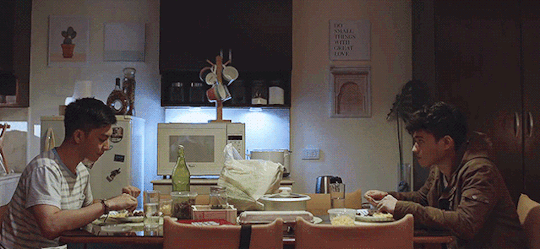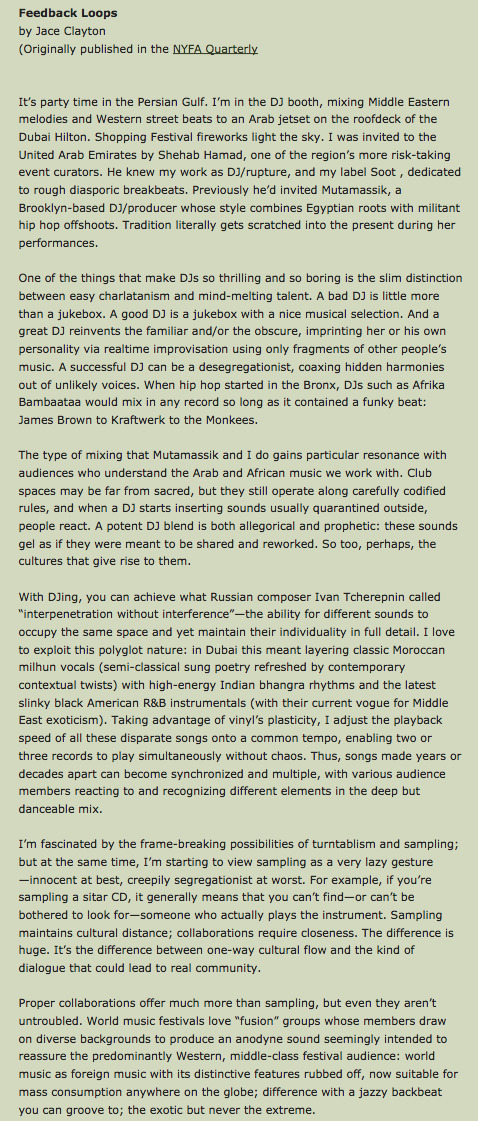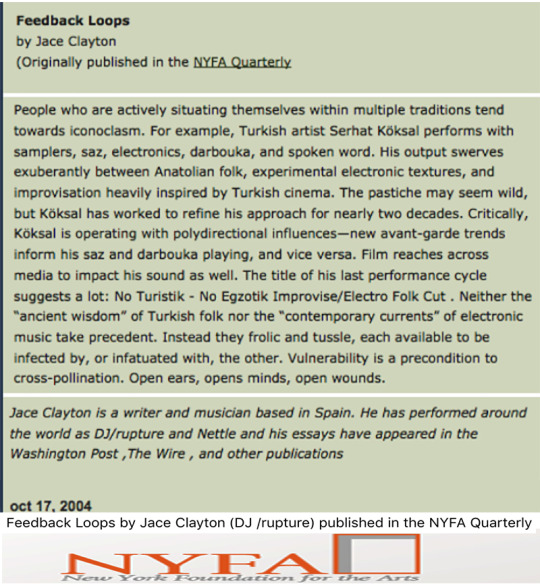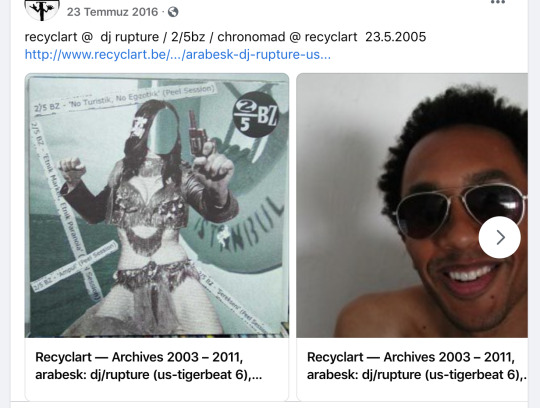#and pure dialogue where i want to insert things like tone and gestures
Text
my fujisaka wip is at 5.1k words 🤪
#i think it could reach 6k#i’ve got it all down but there’s still a significant amount of stuff to explore in more depth#like when writing the draft i write hayasaka does this instead of actually describing what she does#(which is what i want for the final project)#and pure dialogue where i want to insert things like tone and gestures#i wouldn’t call this fic amazing or anything but i’m pretty happy with it so far!#:)))#kaguya sama#my post
8 notes
·
View notes
Text
GAYA SA PELIKULA EP. 02 Review: Let’s talk about that dinner scene.

“May nahanap ka na bang mauuwian?”
I always have this kind of fear over a series that I already liked in the first episode: a fear that the second one will not live up to it, and so will the rest. But Gaya Sa Pelikula on its second episode did not disappoint, and instead set a whole new pace that further strengthens the story it wants to tell. In this episode, you get easy banters, hilarious make-believe and intriguing fantasies, heartwarming softness, a piercing tension at every turn, that very subtle buildup of romance, and of course, that wonderful conversation on the dining table.
Early warning that I have been gushing about the dinner scene since last night, so it will take up a lot of space in this review/discussion.
[WATCH EPISODE 02 HERE]
youtube
What sets Gaya apart

Every time I watch an episode of this show and would rewatch it, I am always overwhelmed with the amount of observations I am able to write down. There are a lot of elements that make this such a good watching experience, and all of those elements just naturally come together. By this, I mean that it does not rely solely on, say, just directing or writing or acting. All of these come together, and I appreciate that you can clearly see how well-thought out everything is.
Episode 02 is a lot more free-flowing and non-structured in my opinion. Transitions feel a lot smoother this time compared to the more scene-after-scene approach of the (no less incredible) pilot episode. Because of this, I actually feel like this point is the real beginning of the story – that this sets the tone for a lot of the future events that could possibly happen between Karl and Vlad, and the people in their lives.
Personally, this is what sets Gaya apart not just among the BL series, but also in Philippine TV in general. For the longest time, we got used to stagnant or repetitive conflicts. Sometimes all the drama are injected to overwhelm the audience. But this one takes its time well. This is a show that wants to bring its audience along its every journey.
Parallels, heartbreaks, buildups

The opening scene picks up where we left off, with Ate Judit now writing a check for Karl’s rent because Vlad will stay over. She reminds Karl that while she’s a cool sister, she won’t stand for her brother getting hurt again. With this, she specifically mentioned “a boy too sweet to swat a fly” who broke his brother’s heart before.
First of all, I’m getting a sudden whiplash whenever this is brought up because I know exactly who it is. Given the first encounter of Karl with Vlad, where he saw him drunkenly dancing to a song about intense heartbreak (again, stream tyl by kakie!), it must have been something truly painful. It doesn’t help as well that there is an obvious parallel going on here with the fact that the description also fits Karl. At one point, Vlad also tells him that he does not need to worry because he looks like someone who does not have a power to hurt him anyway. They are really setting us up as early as now for the heartache, no?

In the same way, I appreciate how this show inserts the sexual attraction also forming between the two of them. Sexual attraction is a part of romance. Gaya normalizes it and emphasizes that it is just natural. The couch scene was particularly genius because of the double meanings of Karl and Vlad’s exchange. But more than that, I like how it also unapologetically shows the physical component of that attraction by having Karl and Vlad sit close together. Vlad even has his arm around Karl. Even the fact that Karl stared at Vlad when he got out of the bathroom was a nice touch.
While the One More Chance dream fantasy was all sorts of hilarious and sexy, it is a testament to how Karl’s subconscious is already telling him something that he keeps on denying. I also like the nice touch there when Karl woke up, he was just disoriented that he had a dirty dream, but not disgusted by it (there are some series and dramas that do this). He is attracted to Vlad. However, for Karl to accept his feelings, it also means that he needs to accept his sexuality. A point which was discussed primarily in the scene before this – the conversation at the dining table.
The phenomenal dinner scene

I wish I am able to give justice to this scene through words, and I’ll try because we need to talk about it (or I need to talk about it). As a fan of films and TV series, I feel like conversations are the most difficult to bring to the surface. You need to keep the audience’s attention while also making sure that the depth is there. For me, what I always look for in conversation scenes are three things: (1) how normal these conversations would sound like as if you are overhearing them from the table next to you; (2) how a director captures the rawness of the exchange between the two actors; and (3) how natural would the delivery be of each line. I think the third point is very important. Some actors have this tendency to talk in a certain kind of perky tone that makes it sound superficial. Thank goodness, both Ian and Pao were really great in this scene.
Of course, the most well-known example for a good conversation scene is the entire Before trilogy – it remains the gold standard for exhibiting the power and the magic of conversations, of an entire film with just these two people talking and forming connections. While this dinner scene isn’t exactly a Before levels type of perfection, to me it was a perfect scene in the face of BL series and the Philippines TV landscape in general.
𝗚𝗮𝘆. 𝗕𝗮𝗸𝗹𝗮. 𝗕𝗮𝘆𝗼𝘁. 𝗕𝗮𝗱𝗶𝗻𝗴. 𝗝𝘂𝘀𝘁 𝘀𝗮𝘆 𝗶𝘁. 𝗜𝘁 𝗻𝗲𝗲𝗱𝘀 𝗻𝗼 𝗲𝘂𝗽𝗵𝗲𝗺𝗶𝘀𝗺. 𝗜𝘁’𝘀 𝗻𝗼𝘁 𝗮𝗻 𝗶𝗻𝘀𝘂𝗹𝘁.
One of the things best highlighted in this scene is when Karl did the gesture with his hand. That is unfortunately common in the Philippines, with people literally doing it to your face when they ask you. Or some of them done behind your back with matching giggling and knowing looks. I should know because I’ve seen it among my relatives when they try to refer to or describe a cousin or an uncle who is gay or might be gay. Karl was conditioned to think this way, and it’s no surprise that he would struggle to ask the question and get the word out. Meanwhile, Vlad is confident in his own skin. He doesn’t miss a beat and tries to get Karl to say the words in a way that both lectures him and encourages him.
This is what makes the scene purely amazing. It is confrontational, but it is not dramatic. It isn’t even preachy at all. It’s just a seemingly ordinary conversation between two people over a meal, trying to get to know and understand each other. You really got to hand it to Severo for constructing a dialogue this way because it also brings out both of Karl and Vlad’s current disposition. Moreover, this topic is a big deal and there are a lot of conversations that need to be had around it. But this scene easily summed it up around that one simple gesture. In less than a minute, it was able to tell you that being called gay, bakla, bayot, bading is not an insult. No grand monologue was needed.

Aside from that iconic exchange, I also loved the second part of it. It’s not going around much on Twitter so I can see some people reacting to the earlier exchange as if Karl was really just insulting Vlad. But the deal here is, Karl is also in the process of unlearning his bias and conditioning. He grew up in a household where his Dad would take digs against his gay uncle, Tito Santi. There’s even a hint of Tito Santi being physically hurt by his father if he’s “babakla-bakla” (basically another insulting way of saying lalambot-lambot). You can just imagine how difficult it must have been for him to grow up and feel like he needs to follow a certain path that his parents see for him.
Hence, when confronted by Vlad with the question, “Ikaw ba, bakla ka?” he was defensive. His tone shot up much higher than normal and was almost panicked. You can literally feel all of his guard come up. Vlad asked him why he was acting like he just accused him of a crime, and to his credit, Karl immediately apologized. But again, I just really understand Karl and I can’t wait for him to really see himself and get to know himself. There is so much about him that I am interested to learn and for him to learn as well about himself. I always see him as like a kid learning to take his first steps – he stumbles but tries to stand again even for just the sake of himself. His many mess-ups in life make his character compelling… and I guess this is just me on my #ProtectKarlAgenda.

Interestingly, as per Direk JP, above scene references an iconic scene from Jose Javier Reyes’ 1993 rom-com film MAY MINAMAHAL which, coincidentally, I just watched last month when I found its restored version on iWant. Amazing as well that the specific scene of them having a meal together was really my favourite from the film because it was a turning point for Carlitos (Aga Muhlach) and Monica (Aiko Melendez). It was when they finally start to get to know each other because for the longest time, they would just flirt in the cafeteria. It was a fitting reference because for Karl and Vlad, they are already starting to get to know each other by sharing even a small part of themselves. I also find it adorable watching Karl watch Vlad messily eat his food. I live for those small soft moments because it just seems so pure and innocent.
All in all, the dinner scene truly delivered. It was iconic and powerful. Major props to Gege and Direk JP, but also to both Ian and Pao. I loved how Pao was able to capture Karl’s reluctance and embarrassment, and Ian just exudes the confidence you need to see in Vlad. How can I describe this connection? Magnetic, I guess? They can easily throw these lines at each other, sustain the tension, and kind of just get lost in it. At every turn, Vlad has the power in this scene as he tries to pull Karl towards him, but also Karl stands on his own ground despite being unsure. I appreciate that about Karl – his life can be a mess, but he never really loses his sense of self and principles.
Finding a home

Aside from everything that happened in this episode, one of the things that I definitely loved is its subtle hint of these two people finding a home in each other. The most striking line for me, really, was when Karl asked Vlad, may nahanap ka na bang mauuwian? I like that this can translate to have you found a place to stay in? and have you found a place to go home to? The episode had such a great run in double meanings, and this one takes the cake more than anything. Karl was starting to feel guilty about kicking out Vlad, and it also happens that over his phone call with Tito Santi, he told him to always find a way to repay kindness with paying it forward to another person or to the community. Luckily, Vlad went back to his apartment to use the restroom.
When Vlad was about to leave, Karl called him back and asked, “Nag-dinner ka na ba?”
Vlad stayed for dinner.
When Vlad was done with dinner and was about to leave again, Karl stopped him and said, “Dito ka na lang matulog.”
Vlad stayed the night.
When Vlad was about to leave to come live with his ex-boyfriend after cooking breakfast as a thank-you, Karl offered him a place to stay, “Will you be my housemate?”
Vlad said yes and stayed.
Epilogue

In today’s epilogue, Karl is still seated on his side of the couch, but Vlad this time was standing at the back of the other side, leaning forward. A stuffed whale occupies the space beside Karl. Every now and then, the two of them would look at each other but it is Karl who would often glance back at Vlad – as to what his eyes are telling him, I don’t know. But if I am allowed to guess, perhaps he was trying to get him to sit beside him? Perhaps, as the closing note goes, there is always a space for Vlad there.
Comments; Ramblings

It’s only the second episode but Gaya is already sparking conversations and it does it in such an engaging way for its many fans. For me, this one really sets the foundation for what is yet to come for the story of Karl and Vlad. If anything, this episode emphasizes that struggle will always be a part of queer love, at least in our current socio-political climate. It isn’t just in regard to identity, but also with everything that comes with the acceptance of who you are by yourself and the Other.
For the pilot episode discussion, I talked about how there seems to be a running theme in this show about seeing – of looking at yourself, the other, or a beloved. This episode shows us Karl seeing Vlad; closely and slowly starting to unravel what it was about him that compels him. For Vlad’s part, I’m pretty sure he’s starting to see who Karl is, too. I feel like him feeling comfortable enough with the idea of staying in Karl’s place and actually living with him over the sem break is an indication of strangely feeling at ease (home?) with someone he just met.
The concept of persons as homes takes me back to a post from a Facebook page called Bibliophile, which was lifted from a poem written by Warsan Shire called ‘For Women Who Are Difficult to Love’: “You can’t make homes out of human beings. Someone should have already told you that.” This episode made me think a lot about that. On one hand, it feels romantic and uplifting to know that you have someone you can call your home, someone you can always return to as Yiu-fai put it in HAPPY TOGETHER [1997]. On the other hand, it feels scary because people change and if today the door and the windows are open, it might not be the same the next day. But I suppose I can feel hopeful for both Karl and Vlad. Perhaps, the door to Karl’s apartment will always be open for Vlad and the space beside the couch will always be reserved for him.
--
Gaya Sa Pelikula airs new episodes every Friday 8PM (Manila time) on Globe Studios’ Youtube channel.
RELATED POSTS
GAYA SA PELIKULA Ep 01 Review [x]
#gaya sa pelikula#like in the movies#pangpang#ian pangilinan#paolo pangilinan#pinoy bl#filipino web series#filipino bl#boys love#juan miguel severo#jp habac#gsp review#owned
15 notes
·
View notes
Photo










Feedback Loops
by Jace Clayton
(Originally published in the NYFA Quarterly
It’s party time in the Persian Gulf. I’m in the DJ booth, mixing Middle Eastern melodies and Western street beats to an Arab jetset on the roofdeck of the Dubai Hilton. Shopping Festival fireworks light the sky. I was invited to the United Arab Emirates by Shehab Hamad, one of the region’s more risk-taking event curators. He knew my work as DJ/rupture, and my label Soot , dedicated to rough diasporic breakbeats. Previously he’d invited Mutamassik, a Brooklyn-based DJ/producer whose style combines Egyptian roots with militant hip hop offshoots. Tradition literally gets scratched into the present during her performances.
One of the things that make DJs so thrilling and so boring is the slim distinction between easy charlatanism and mind-melting talent. A bad DJ is little more than a jukebox. A good DJ is a jukebox with a nice musical selection. And a great DJ reinvents the familiar and/or the obscure, imprinting her or his own personality via realtime improvisation using only fragments of other people’s music. A successful DJ can be a desegregationist, coaxing hidden harmonies out of unlikely voices. When hip hop started in the Bronx, DJs such as Afrika Bambaataa would mix in any record so long as it contained a funky beat: James Brown to Kraftwerk to the Monkees.
The type of mixing that Mutamassik and I do gains particular resonance with audiences who understand the Arab and African music we work with. Club spaces may be far from sacred, but they still operate along carefully codified rules, and when a DJ starts inserting sounds usually quarantined outside, people react. A potent DJ blend is both allegorical and prophetic: these sounds gel as if they were meant to be shared and reworked. So too, perhaps, the cultures that give rise to them.
With DJing, you can achieve what Russian composer Ivan Tcherepnin called “interpenetration without interference”—the ability for different sounds to occupy the same space and yet maintain their individuality in full detail. I love to exploit this polyglot nature: in Dubai this meant layering classic Moroccan milhun vocals (semi-classical sung poetry refreshed by contemporary contextual twists) with high-energy Indian bhangra rhythms and the latest slinky black American R&B instrumentals (with their current vogue for Middle East exoticism). Taking advantage of vinyl’s plasticity, I adjust the playback speed of all these disparate songs onto a common tempo, enabling two or three records to play simultaneously without chaos. Thus, songs made years or decades apart can become synchronized and multiple, with various audience members reacting to and recognizing different elements in the deep but danceable mix.
I’m fascinated by the frame-breaking possibilities of turntablism and sampling; but at the same time, I’m starting to view sampling as a very lazy gesture—innocent at best, creepily segregationist at worst. For example, if you’re sampling a sitar CD, it generally means that you can’t find—or can’t be bothered to look for—someone who actually plays the instrument. Sampling maintains cultural distance; collaborations require closeness. The difference is huge. It’s the difference between one-way cultural flow and the kind of dialogue that could lead to real community.
Proper collaborations offer much more than sampling, but even they aren’t untroubled. World music festivals love “fusion” groups whose members draw on diverse backgrounds to produce an anodyne sound seemingly intended to reassure the predominantly Western, middle-class festival audience: world music as foreign music with its distinctive features rubbed off, now suitable for mass consumption anywhere on the globe; difference with a jazzy backbeat you can groove to; the exotic but never the extreme.
Mainstream pop, reggae, and R&B offer an interesting solution: go synthetic. Star producers like Timbaland and The Neptunes have been inventing wildly creative pop songs for artists like Missy Elliott and Justin Timberlake with a decidedly eastward lean. Yet there is, refreshingly, zero reliance on a veneer of authenticity. These are the few producers who can afford to legally clear all their samples, yet more often than not they choose to fabricate a prosthetic North African beat, or to replay a quarter-tone violin harmony line on a cheap synthesizer. Brilliant or lazy or both? Does pop’s self-replicating, amoebic logic wipe out all others? Suffice to say that The Neptunes song I played in Dubai received the best crowd response.
A glance in the other direction reveals an incredible culture of bootlegging, versioning, and westward exoticism in Arabic pop. At any Moroccan music store you’ll find endless cassettes such as HipHop Ray 2002! : a bootleg compilation that alternates rai hits with misattributed mainstream American rap. Or, a recent favorite of mine, the bootleg rai CD Compil Santana : the cover and CD artwork sports images of seven Moroccan vocalists . . . and Victoria’s Secret supermodel Laetitia Casta. Glamour becomes a universal glue.
Musical influence spreads like wildfire, wafting across borders of nation, language, and religion. Yet, controlling notions of authenticity police virtually all genres. Leatherbound anarchists are quick to classify what is and isn’t punk rock; “keeping it real” is a constant refrain in hip hop; talk of “pure” flamenco abounds in Spain although Arabic influences are clearly audible in the vocal ululations and sinewy guitar style of Spain’s cherished “national” music. So how do we keep it real if our mission is to adapt multiple traditions into an idiosyncratic unity? All music springs from multiple roots, yet the history of the hybrid is no history at all, just an X on the map where the border-crosser left both lands.
People who are actively situating themselves within multiple traditions tend towards iconoclasm. For example, Turkish artist Serhat Köksal performs with samplers, saz, electronics, darbouka, and spoken word. His output swerves exuberantly between Anatolian folk, experimental electronic textures, and improvisation heavily inspired by Turkish cinema. The pastiche may seem wild, but Köksal has worked to refine his approach for nearly two decades. Critically, Köksal is operating with polydirectional influences—new avant-garde trends inform his saz and darbouka playing, and vice versa. Film reaches across media to impact his sound as well. The title of his last performance cycle suggests a lot: No Turistik - No Egzotik Improvise/Electro Folk Cut . Neither the “ancient wisdom” of Turkish folk nor the “contemporary currents” of electronic music take precedent. Instead they frolic and tussle, each available to be infected by, or infatuated with, the other. Vulnerability is a precondition to cross-pollination. Open ears, opens minds, open wounds.
In addition to my activities as DJ/rupture, I make music as Nettle. Nettle originated in my fascination with the concept of an album heavily influenced by Middle Eastern ideas, but not necessarily at the audible level. I was unsatisfied with the narrative poles of electronic music—loop-based dance pieces or abstract/ambient pieces without storytelling force. A suite of rigorous modal improvisation in Arabic music called taqasims offered the solution: I knew and loved their internal play between free-flowing improv and strict technical guidelines. I spent a year or two translating these ideas into pieces for samplers and laptop. Two albums later I still wasn’t satisfied: one-way cultural flows aren’t good enough. I wanted community, two-way translations, the squeal of a feedback loop.
Earlier this year I was commissioned by a British arts council to transform Nettle into a proper live ensemble. Violin, oud, percussion, electronics, realtime sampling. I’d been involved in Barcelona’s Moroccan music community for awhile, but the Nettle project has upped the intensity of collaboration. A few days ago, Nettle’s violin and oud player, Abdelaziz Hak, brought up taqasims to explain his response to a beat I’d prepared for him. I broke into a silly grin.
This is working. We’re starting to get under each other’s skin.
Jace Clayton is a writer and musician based in Spain. He has performed around the world as DJ/rupture and Nettle and his essays have appeared in the Washington Post ,The Wire , and other publications
-
2/5 BZ - - Karabesk
https://wfmu.org/playlists/shows/26186
.
2/5 BZ Etnik Market Etnik Paranoia
http://wfmu.org/playlists/shows/34182
.
Mudd Up! with DJ/Rupture
---
http://autonomicforthepeople.blogspot.com.tr/2004_10_01_archive.html
.
https://www.nyfa.org/
*****
arabesk : dj/rupture (us-tigerbeat 6), chronomad live, serhat köksal aka 2/5bz live, dj mormos & dj coconuts
23-avril-2005
22.00 - 7€
La gare métamorphosée en riad underrail ? On fera tout pour : scénographie orientalo-décalée, projections cali-graphiques, danse du ventre piercée et épices…
Dj/rupture est le maître incontesté du mix non-géographique ultra-dansant. Un son au delà des genres aux rythmiques post-culturelles. Un mash-up de rythmes arabes, techno, reggae, spoken word, folk, hip hop, breakbeats, avant-noise et jazz effectués avec prouesse et réussissant des connections musicales improbables, le regard tourné vers un futur sans frontières.
Serhat Köksal est un artiste performer d'Istanbul. Il mélange de l'electronica rugueuse avec des sons des rues d'Istanbul et de la pop orientale saturée. Il travaille aussi l'image en live, en déconstruisant des films turcs des années ‘70.
Chronomad est le projet de Saam Schlamminger, d'origine perse et résidant en Allemagne. Il collabore régulièrement avec des membres de The Notwist et Lali Puna et a sorti un album sublime sur Alien Transistor, « Sokut ». Il manipule percussions traditionnelles iraniennes avec de l'électronique et se situe ainsi au-delà de toute forme de world music. La particularité du son de ces percussions en contraste avec les manipulations électroniques font appel à notre imaginaire universel. Pas de frontières non plus pour Chronomad, mais plutôt un dialogue entre traditions ancestrales et traditions à venir.
http://www.recyclart.be/fr/archives-2003-2011/arabesk-dj-rupture-us-tigerbeat-6-chronomad-live-serhat-koksal-aka-2-5bz-live-dj-mormos-dj-coconuts
3 notes
·
View notes
Photo





arabesk : dj/rupture (us-tigerbeat 6), chronomad live, serhat köksal aka 2/5bz live, dj mormos & dj coconuts
23-avril-2005
22.00 - 7€
La gare métamorphosée en riad underrail ? On fera tout pour : scénographie orientalo-décalée, projections cali-graphiques, danse du ventre piercée et épices…
Dj/rupture est le maître incontesté du mix non-géographique ultra-dansant. Un son au delà des genres aux rythmiques post-culturelles. Un mash-up de rythmes arabes, techno, reggae, spoken word, folk, hip hop, breakbeats, avant-noise et jazz effectués avec prouesse et réussissant des connections musicales improbables, le regard tourné vers un futur sans frontières.
Serhat Köksal est un artiste performer d'Istanbul. Il mélange de l'electronica rugueuse avec des sons des rues d'Istanbul et de la pop orientale saturée. Il travaille aussi l'image en live, en déconstruisant des films turcs des années '70.
Chronomad est le projet de Saam Schlamminger, d'origine perse et résidant en Allemagne. Il collabore régulièrement avec des membres de The Notwist et Lali Puna et a sorti un album sublime sur Alien Transistor, « Sokut ». Il manipule percussions traditionnelles iraniennes avec de l'électronique et se situe ainsi au-delà de toute forme de world music. La particularité du son de ces percussions en contraste avec les manipulations électroniques font appel à notre imaginaire universel. Pas de frontières non plus pour Chronomad, mais plutôt un dialogue entre traditions ancestrales et traditions à venir.
http://www.recyclart.be/fr/archives-2003-2011/arabesk-dj-rupture-us-tigerbeat-6-chronomad-live-serhat-koksal-aka-2-5bz-live-dj-mormos-dj-coconuts
**************
Feedback Loops
by Jace Clayton
(Originally published in the NYFA Quarterly
It’s party time in the Persian Gulf. I’m in the DJ booth, mixing Middle Eastern melodies and Western street beats to an Arab jetset on the roofdeck of the Dubai Hilton. Shopping Festival fireworks light the sky. I was invited to the United Arab Emirates by Shehab Hamad, one of the region’s more risk-taking event curators. He knew my work as DJ/rupture, and my label Soot , dedicated to rough diasporic breakbeats. Previously he’d invited Mutamassik, a Brooklyn-based DJ/producer whose style combines Egyptian roots with militant hip hop offshoots. Tradition literally gets scratched into the present during her performances.
One of the things that make DJs so thrilling and so boring is the slim distinction between easy charlatanism and mind-melting talent. A bad DJ is little more than a jukebox. A good DJ is a jukebox with a nice musical selection. And a great DJ reinvents the familiar and/or the obscure, imprinting her or his own personality via realtime improvisation using only fragments of other people’s music. A successful DJ can be a desegregationist, coaxing hidden harmonies out of unlikely voices. When hip hop started in the Bronx, DJs such as Afrika Bambaataa would mix in any record so long as it contained a funky beat: James Brown to Kraftwerk to the Monkees.
The type of mixing that Mutamassik and I do gains particular resonance with audiences who understand the Arab and African music we work with. Club spaces may be far from sacred, but they still operate along carefully codified rules, and when a DJ starts inserting sounds usually quarantined outside, people react. A potent DJ blend is both allegorical and prophetic: these sounds gel as if they were meant to be shared and reworked. So too, perhaps, the cultures that give rise to them.
With DJing, you can achieve what Russian composer Ivan Tcherepnin called “interpenetration without interference”—the ability for different sounds to occupy the same space and yet maintain their individuality in full detail. I love to exploit this polyglot nature: in Dubai this meant layering classic Moroccan milhun vocals (semi-classical sung poetry refreshed by contemporary contextual twists) with high-energy Indian bhangra rhythms and the latest slinky black American R&B instrumentals (with their current vogue for Middle East exoticism). Taking advantage of vinyl’s plasticity, I adjust the playback speed of all these disparate songs onto a common tempo, enabling two or three records to play simultaneously without chaos. Thus, songs made years or decades apart can become synchronized and multiple, with various audience members reacting to and recognizing different elements in the deep but danceable mix.
I’m fascinated by the frame-breaking possibilities of turntablism and sampling; but at the same time, I’m starting to view sampling as a very lazy gesture—innocent at best, creepily segregationist at worst. For example, if you’re sampling a sitar CD, it generally means that you can’t find—or can’t be bothered to look for—someone who actually plays the instrument. Sampling maintains cultural distance; collaborations require closeness. The difference is huge. It’s the difference between one-way cultural flow and the kind of dialogue that could lead to real community.
Proper collaborations offer much more than sampling, but even they aren’t untroubled. World music festivals love “fusion” groups whose members draw on diverse backgrounds to produce an anodyne sound seemingly intended to reassure the predominantly Western, middle-class festival audience: world music as foreign music with its distinctive features rubbed off, now suitable for mass consumption anywhere on the globe; difference with a jazzy backbeat you can groove to; the exotic but never the extreme.
Mainstream pop, reggae, and R&B offer an interesting solution: go synthetic. Star producers like Timbaland and The Neptunes have been inventing wildly creative pop songs for artists like Missy Elliott and Justin Timberlake with a decidedly eastward lean. Yet there is, refreshingly, zero reliance on a veneer of authenticity. These are the few producers who can afford to legally clear all their samples, yet more often than not they choose to fabricate a prosthetic North African beat, or to replay a quarter-tone violin harmony line on a cheap synthesizer. Brilliant or lazy or both? Does pop’s self-replicating, amoebic logic wipe out all others? Suffice to say that The Neptunes song I played in Dubai received the best crowd response.
A glance in the other direction reveals an incredible culture of bootlegging, versioning, and westward exoticism in Arabic pop. At any Moroccan music store you’ll find endless cassettes such as HipHop Ray 2002! : a bootleg compilation that alternates rai hits with misattributed mainstream American rap. Or, a recent favorite of mine, the bootleg rai CD Compil Santana : the cover and CD artwork sports images of seven Moroccan vocalists … and Victoria’s Secret supermodel Laetitia Casta. Glamour becomes a universal glue.
Musical influence spreads like wildfire, wafting across borders of nation, language, and religion. Yet, controlling notions of authenticity police virtually all genres. Leatherbound anarchists are quick to classify what is and isn’t punk rock; “keeping it real” is a constant refrain in hip hop; talk of “pure” flamenco abounds in Spain although Arabic influences are clearly audible in the vocal ululations and sinewy guitar style of Spain’s cherished “national” music. So how do we keep it real if our mission is to adapt multiple traditions into an idiosyncratic unity? All music springs from multiple roots, yet the history of the hybrid is no history at all, just an X on the map where the border-crosser left both lands.
People who are actively situating themselves within multiple traditions tend towards iconoclasm. For example, Turkish artist Serhat Köksal performs with samplers, saz, electronics, darbouka, and spoken word. His output swerves exuberantly between Anatolian folk, experimental electronic textures, and improvisation heavily inspired by Turkish cinema. The pastiche may seem wild, but Köksal has worked to refine his approach for nearly two decades. Critically, Köksal is operating with polydirectional influences—new avant-garde trends inform his saz and darbouka playing, and vice versa. Film reaches across media to impact his sound as well. The title of his last performance cycle suggests a lot: No Turistik - No Egzotik Improvise/Electro Folk Cut . Neither the “ancient wisdom” of Turkish folk nor the “contemporary currents” of electronic music take precedent. Instead they frolic and tussle, each available to be infected by, or infatuated with, the other. Vulnerability is a precondition to cross-pollination. Open ears, opens minds, open wounds.
In addition to my activities as DJ/rupture, I make music as Nettle. Nettle originated in my fascination with the concept of an album heavily influenced by Middle Eastern ideas, but not necessarily at the audible level. I was unsatisfied with the narrative poles of electronic music—loop-based dance pieces or abstract/ambient pieces without storytelling force. A suite of rigorous modal improvisation in Arabic music called taqasims offered the solution: I knew and loved their internal play between free-flowing improv and strict technical guidelines. I spent a year or two translating these ideas into pieces for samplers and laptop. Two albums later I still wasn’t satisfied: one-way cultural flows aren’t good enough. I wanted community, two-way translations, the squeal of a feedback loop.
Earlier this year I was commissioned by a British arts council to transform Nettle into a proper live ensemble. Violin, oud, percussion, electronics, realtime sampling. I’d been involved in Barcelona’s Moroccan music community for awhile, but the Nettle project has upped the intensity of collaboration. A few days ago, Nettle’s violin and oud player, Abdelaziz Hak, brought up taqasims to explain his response to a beat I’d prepared for him. I broke into a silly grin.
This is working. We’re starting to get under each other’s skin.
Jace Clayton is a writer and musician based in Spain. He has performed around the world as DJ/rupture and Nettle and his essays have appeared in the Washington Post ,The Wire , and other publications
-
2/5 BZ - - Karabesk
https://wfmu.org/playlists/shows/26186
.
2/5 BZ Etnik Market Etnik Paranoia
http://wfmu.org/playlists/shows/34182
.
Mudd Up! with DJ/Rupture
—
http://autonomicforthepeople.blogspot.com.tr/2004_10_01_archive.html
0 notes